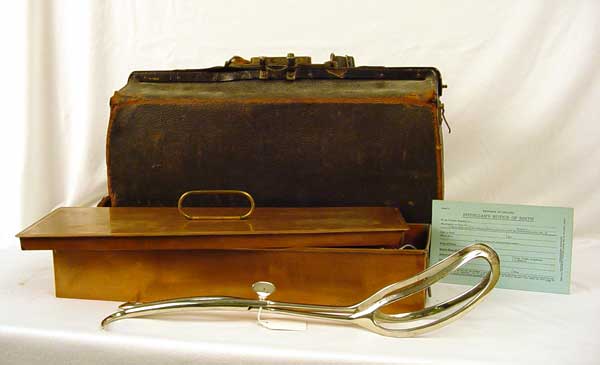During the 19th and early 20th centuries Western medicine underwent a number of radical changes and advancements in knowledge, treatment and patient care. One such field was obstetrics and gynaecology. Traditionally women had always looked after one another in childbirth, as in other complaints, however physicians, most of whom were male, increasingly played a more important role. Physicians thought poorly of female midwives whom they perceived as untrained and dangerous. Additionally, they were considered competition for the often meager income physicians at the time earned. The medicalization of childbirth was also responsible for the general shift from homebirths to those in highly controlled hospital settings as well as the increased amount of prenatal care which was offered. These changes were welcomed by some women who were attracted to these modern options while others became disillusioned and longed for the days when they were in control of their pregnancies. After completing this module students will understand: Delee's-Hillis Foetal Stethoscope database entry Midwifery Forceps database entry Cranioclast database entry Nipple Shields database entry Perforators database entry Crochet database entry Kirk-Montgomery, Allison and Shelley McKellar. Medicine and Technology in Canada: 1900-1950. Ottawa: Canadian Museum of Science and Technology, 2008. Tew, W. P. “The Use and Abuse of Obstetrical Forceps.” Canadian Medical Association Journal 15:10 (1925): 1031-1034. Andison, A. W. “Caesarean Section.” Canadian Medical Association Journal 56:2 (1947): 170-177. Lusk, William Thompson. The Science and the Art of Midwifery. New York: D. Appleton & Co., 1886, 414-415, 418-419. Primary Sources Barnes, Robert. Lectures on Obstetric Operations, Including the Treatment of Haemorrhage, and Forming a Guide to the Management of Difficult Labour. London: Churchill, 1870. Fisher & Burpe Division of American Hospital Supply Corporation Canada Ltd. Catalogue, 1961. Secondary Sources Cahill, H.A. "Male Appropriation and Medicalization of Childbirth: An Historical Analysis." Journal of Advanced Nursing 33:3 (2001): 334-42. Wilbur, Keith C. Antique Medical Instruments, ed.5. Atglen: Schiffer Publishing Ltd., 2003. Epstein, Randi Hutter. Get Me Out: A History of Childbirth. New York: W.W. Norton & Company, 2010. Mitchinson, Wendy. Giving Birth in Canada 1900-1950. Toronto: University of Toronto Press, 2002.
The medicalization of childbirth can be traced through the instruments used in obstetric practice during this time period. While doctors and midwives possessed different childbirth tools, there was also a difference between Protestant and Catholic practitioners when deliveries became life-threatening. Protestant physicians valued the life of the mother and would often take the life of the child in order to save the mother's life. Conversely, Catholic physicians valued the life of the unborn child, whose soul, according to church doctrine, would go to hell if it died unbaptized, unlike the baptized mother who would be welcomed into God’s waiting arms. As the procedure for a Caesarian section became safer and more routinely practiced, physicians were able to preserve the life of both mother and child in most cases.
Learning Objectives
Step 1: Objects and Their Properties
For each object answer the following questions:
Alternative Images
180° View (requires QuickTime) (1.2Mb)
Alternative Images
180° View (requires QuickTime) (1.2Mb)
Alternative Images
180° View (requires QuickTime) (1.2Mb)
Alternative Images
Alternative Images
180° View (requires QuickTime) (1.2Mb)
Alternative Images
180° View (requires QuickTime) (1.2Mb)
Step 2: The Meaning of an Artifact
For each object answer the following questions:
Selected References for Further Research
Ramsbotham, Francis H. The Principles and Practice of Obstetric Medicine and Surgery, in Reference to the Process of Parturition. London: John Churchill, 1844 2nd. Ed.
Bennion, Elisabeth. Antique Medical Instruments. Berkeley: University of California Press, 1979.
Bourgeault, Ivy Lyn. Push: The Struggle for Midwifery in Ontario. Montreal: McGill-Queen’s University Press, 2006.
You are using a browser that is not standards-compliant. The information on this Web site will be accessible to you, but for a list of Web browsers that comply with the World Wide Web Consortium standards, please visit our Web standards page.

